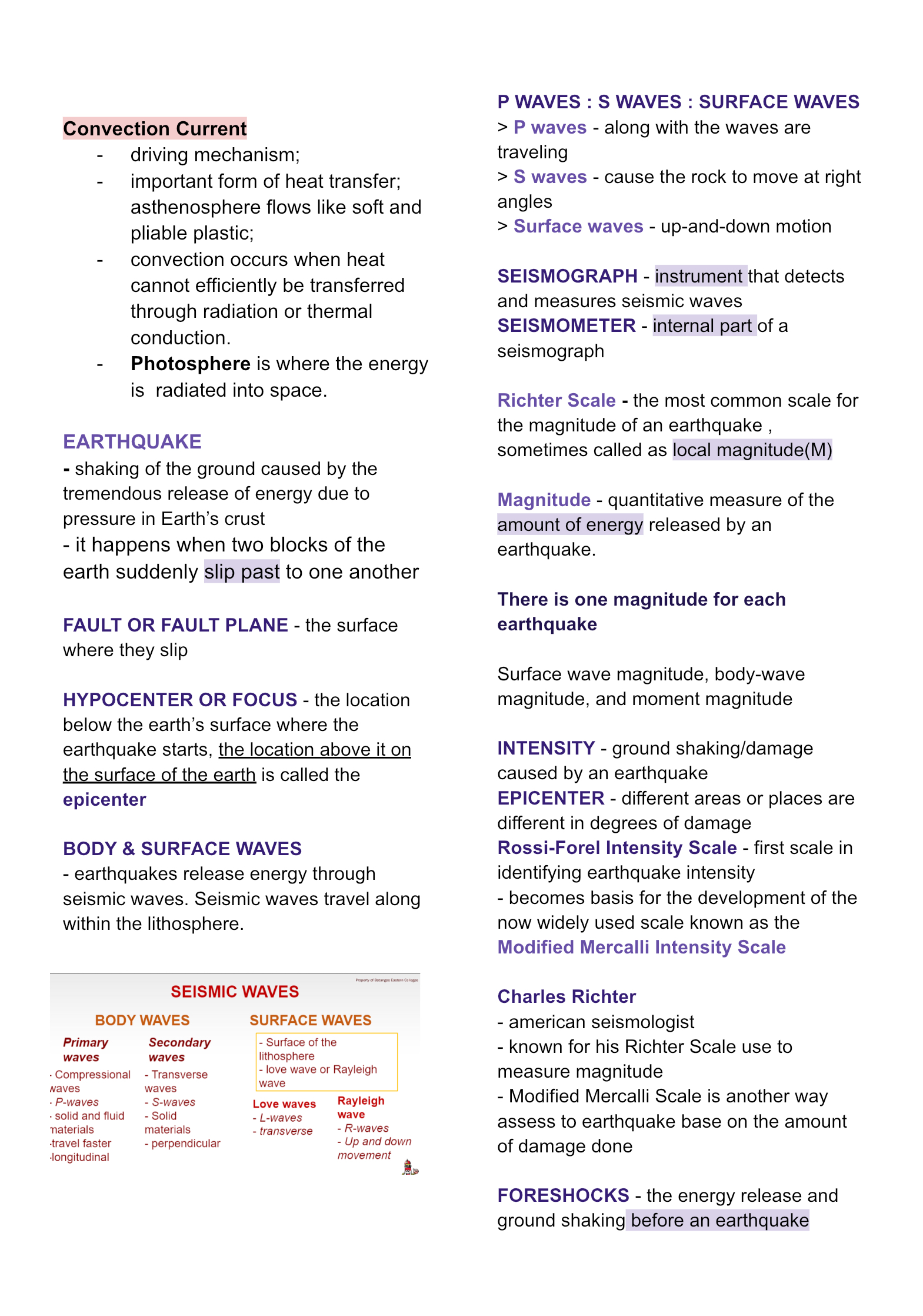What are seismic waves, and how are they related to earthquakes?

Understand the Problem
The question is focused on seismic waves, earthquakes, and their measurement. It describes different types of seismic waves (P waves, S waves, surface waves), the Richter scale, and other related concepts regarding how earthquakes are measured and the effects they produce.
Answer
Seismic waves are vibrations from sudden Earth movements, mainly due to earthquakes, transmitting energy and causing ground shaking.
Seismic waves are vibrations caused by sudden movements within the Earth, such as slipping along faults during earthquakes. They can be generated by various phenomena, including volcanic eruptions and landslides. During an earthquake, seismic waves radiate energy from the source, causing ground shaking.
Answer for screen readers
Seismic waves are vibrations caused by sudden movements within the Earth, such as slipping along faults during earthquakes. They can be generated by various phenomena, including volcanic eruptions and landslides. During an earthquake, seismic waves radiate energy from the source, causing ground shaking.
More Information
Seismic waves can be classified into two main types: body waves (P waves and S waves) that travel through the Earth and surface waves (Love waves and Rayleigh waves) that travel along the Earth's surface. The characteristics and speed of these waves help scientists determine the earthquake's magnitude and epicenter.
Tips
A common mistake is confusing P waves and S waves with surface waves. Remember that P waves (primary waves) are compressional and travel fastest, while S waves (secondary waves) move perpendicularly to the direction of the wave and are slower. Surface waves cause the most damage.
Sources
- Earthquakes and Seismic Waves - whoi.edu
- Seismic wave | Earth's Interior Structure & Movement | Britannica - britannica.com
- The Science of Earthquakes | U.S. Geological Survey - USGS.gov - usgs.gov
AI-generated content may contain errors. Please verify critical information